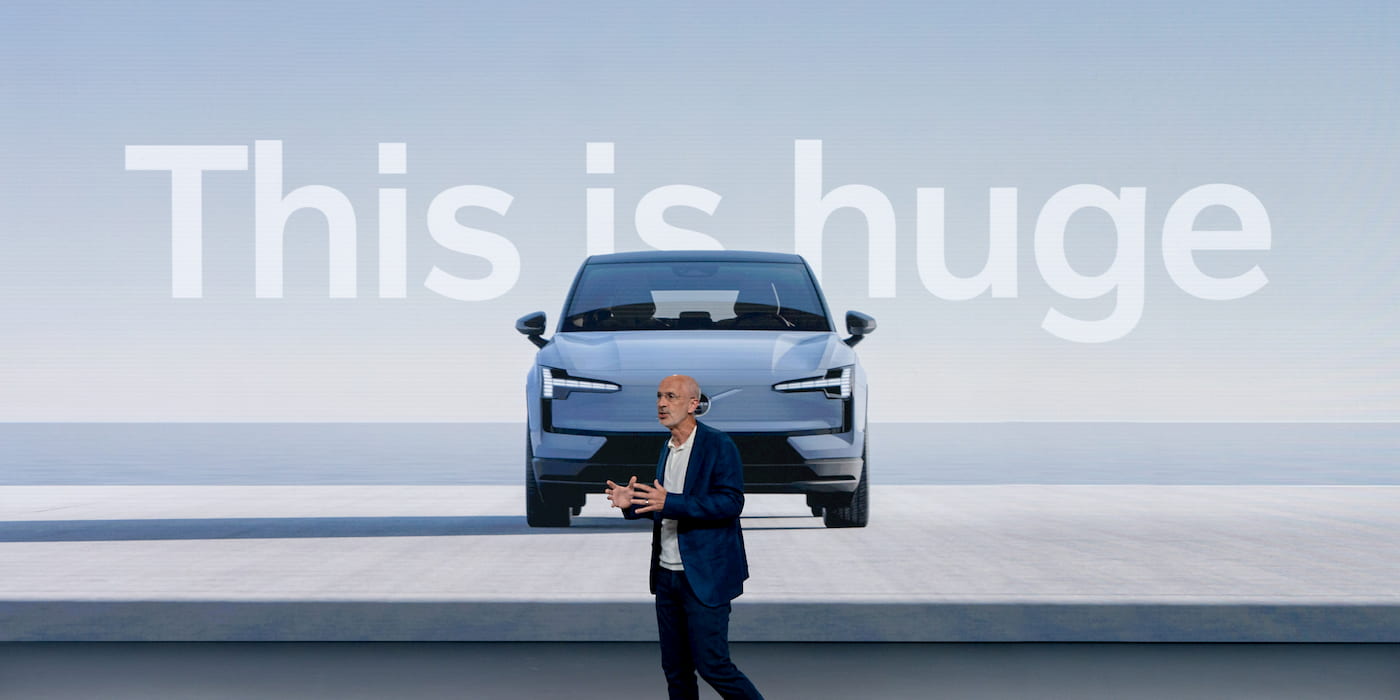Volvo and CATL have big plans for old EV batteries
Volvo and CATL have big plans for old EV batteries Electrek


Volvo and CATL to turn old EV batteries into new ones

Volvo and battery giant CATL have formed a partnership to address the environmental impact of electric vehicles (EVs) by recycling old EV batteries. This collaboration aims to reduce the carbon footprint associated with EVs by reusing key battery materials.
Volvo’s Commitment to Sustainable Development Goals (SDGs)
As one of the first legacy automakers to commit to an all-electric future, Volvo has been actively taking steps to reduce its carbon footprint. In line with the Sustainable Development Goals (SDGs), Volvo has made significant progress in promoting sustainable mobility.
- SDG 7: Affordable and Clean Energy
- SDG 9: Industry, Innovation, and Infrastructure
- SDG 11: Sustainable Cities and Communities
- SDG 13: Climate Action
- SDG 17: Partnerships for the Goals
Last year, Volvo achieved a “key milestone” by selling over 113,000 fully electric vehicles, representing a 70% increase compared to the previous year. Electric cars accounted for 16% of Volvo’s total vehicle sales in 2023, and this number is expected to grow even further with the introduction of new models like the affordable EX30.
The Impact of Volvo’s EX30
Volvo’s EX30, priced at $34,950 in the US and €36,590 in Europe, has already made a significant impact on sales. In March alone, Volvo sold 18,021 EVs, a substantial increase from the previous year. Fully electric vehicles accounted for 23% of total sales, highlighting the growing demand for sustainable transportation options.
Volvo’s COO and deputy CEO, Björn Annwall, attributed the sales growth to the new compact electric SUV and expressed the company’s focus on further expanding the sales of the EX30 in the coming months. Volvo aims to have EVs account for 50% of total sales by the end of next year, as it continues its journey towards an all-electric future by 2030.
Volvo and CATL Partnership: Recycling EV Batteries for a Sustainable Future
Recognizing the need to address the environmental impact of retired EV batteries, Volvo and CATL have joined forces to recycle and repurpose these batteries. This collaboration is a significant step towards achieving SDG 12: Responsible Consumption and Production.
- Volvo and CATL will work together to dismantle old EV batteries and extract over 90% of key materials such as nickel, cobalt, lithium, and others.
- CATL will utilize these recycled materials to manufacture new EV batteries that will power Volvo’s upcoming electric cars.
This long-term partnership between Volvo and CATL, established in 2019, aims to supply batteries for electric Volvo and Polestar models. By implementing sustainable practices in battery recycling, Volvo strives to reduce CO2 emissions per average vehicle by 75% by 2030. The company has already achieved a 20% reduction in average CO2 emissions per vehicle compared to the 2018 baseline, as stated in its 2023 annual report.
Through collaborations like this, Volvo continues to contribute to the achievement of multiple SDGs, including:
- SDG 7: Affordable and Clean Energy
- SDG 9: Industry, Innovation, and Infrastructure
- SDG 11: Sustainable Cities and Communities
- SDG 12: Responsible Consumption and Production
- SDG 13: Climate Action
- SDG 17: Partnerships for the Goals
By prioritizing sustainability and circular economy principles, Volvo and CATL are paving the way for a more sustainable future in the automotive industry.
Source: CnEVPost, Volvo Cars
SDGs, Targets, and Indicators
1. Which SDGs are addressed or connected to the issues highlighted in the article?
- SDG 7: Affordable and Clean Energy
- SDG 9: Industry, Innovation, and Infrastructure
- SDG 12: Responsible Consumption and Production
- SDG 13: Climate Action
- SDG 17: Partnerships for the Goals
The article discusses Volvo’s efforts to reduce the carbon footprint of electric vehicles, recycle old EV batteries, and transition to an all-electric future. These efforts align with the goals of affordable and clean energy (SDG 7), industry innovation and infrastructure (SDG 9), responsible consumption and production (SDG 12), climate action (SDG 13), and partnerships for the goals (SDG 17).
2. What specific targets under those SDGs can be identified based on the article’s content?
- Target 7.2: Increase substantially the share of renewable energy in the global energy mix.
- Target 9.4: Upgrade infrastructure and retrofit industries to make them sustainable.
- Target 12.2: Achieve sustainable management and efficient use of natural resources.
- Target 13.2: Integrate climate change measures into national policies, strategies, and planning.
- Target 17.17: Encourage and promote effective public, public-private, and civil society partnerships.
Based on the article’s content, the specific targets that can be identified include increasing the share of renewable energy (Target 7.2), upgrading infrastructure for sustainability (Target 9.4), achieving sustainable resource management (Target 12.2), integrating climate change measures into policies (Target 13.2), and promoting partnerships for sustainable development (Target 17.17).
3. Are there any indicators mentioned or implied in the article that can be used to measure progress towards the identified targets?
- Indicator 7.2.1: Renewable energy share in the total final energy consumption.
- Indicator 9.4.1: CO2 emissions per unit of value added.
- Indicator 12.2.1: Material footprint, material footprint per capita, and material footprint per GDP.
- Indicator 13.2.1: Number of countries that have communicated the establishment or operationalization of an integrated policy/strategy/plan.
- Indicator 17.17.1: Amount of United Nations Development Assistance Framework (UNDAF) resources mobilized.
The article does not explicitly mention indicators, but based on the identified targets, potential indicators that can be used to measure progress include the share of renewable energy in total energy consumption (Indicator 7.2.1), CO2 emissions per unit of value added (Indicator 9.4.1), material footprint and resource efficiency (Indicator 12.2.1), integration of climate change measures in policies (Indicator 13.2.1), and mobilization of resources for partnerships (Indicator 17.17.1).
SDGs, Targets, and Indicators Table
| SDGs | Targets | Indicators |
|---|---|---|
| SDG 7: Affordable and Clean Energy | Target 7.2: Increase substantially the share of renewable energy in the global energy mix. | Indicator 7.2.1: Renewable energy share in the total final energy consumption. |
| SDG 9: Industry, Innovation, and Infrastructure | Target 9.4: Upgrade infrastructure and retrofit industries to make them sustainable. | Indicator 9.4.1: CO2 emissions per unit of value added. |
| SDG 12: Responsible Consumption and Production | Target 12.2: Achieve sustainable management and efficient use of natural resources. | Indicator 12.2.1: Material footprint, material footprint per capita, and material footprint per GDP. |
| SDG 13: Climate Action | Target 13.2: Integrate climate change measures into national policies, strategies, and planning. | Indicator 13.2.1: Number of countries that have communicated the establishment or operationalization of an integrated policy/strategy/plan. |
| SDG 17: Partnerships for the Goals | Target 17.17: Encourage and promote effective public, public-private, and civil society partnerships. | Indicator 17.17.1: Amount of United Nations Development Assistance Framework (UNDAF) resources mobilized. |
Behold! This splendid article springs forth from the wellspring of knowledge, shaped by a wondrous proprietary AI technology that delved into a vast ocean of data, illuminating the path towards the Sustainable Development Goals. Remember that all rights are reserved by SDG Investors LLC, empowering us to champion progress together.
Source: electrek.co

Join us, as fellow seekers of change, on a transformative journey at https://sdgtalks.ai/welcome, where you can become a member and actively contribute to shaping a brighter future.







